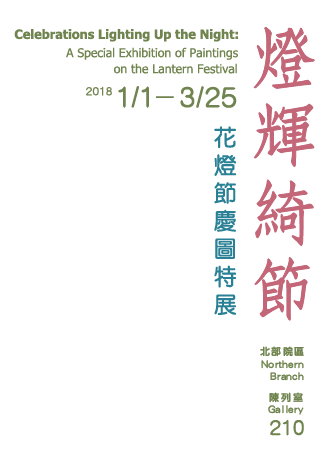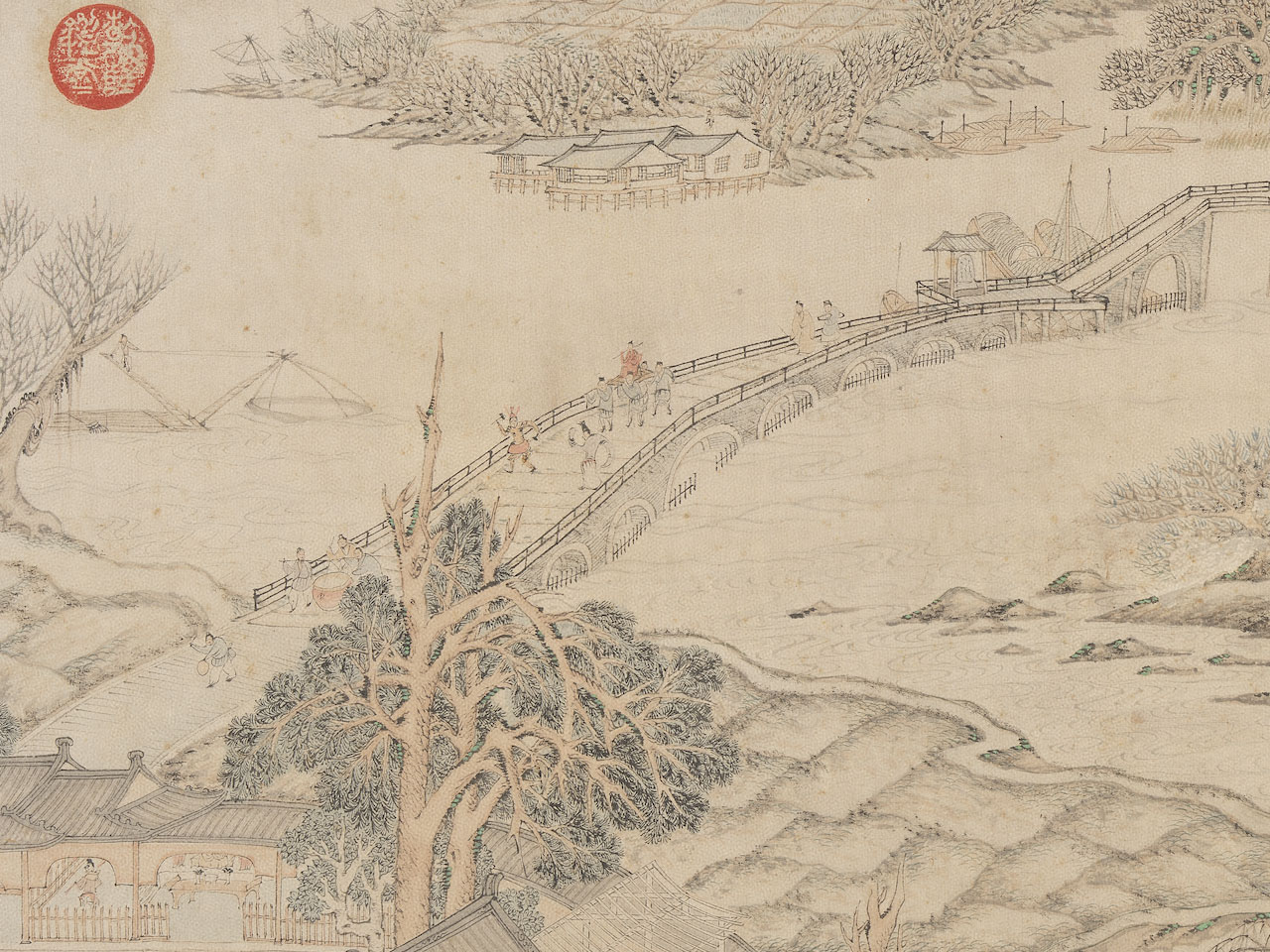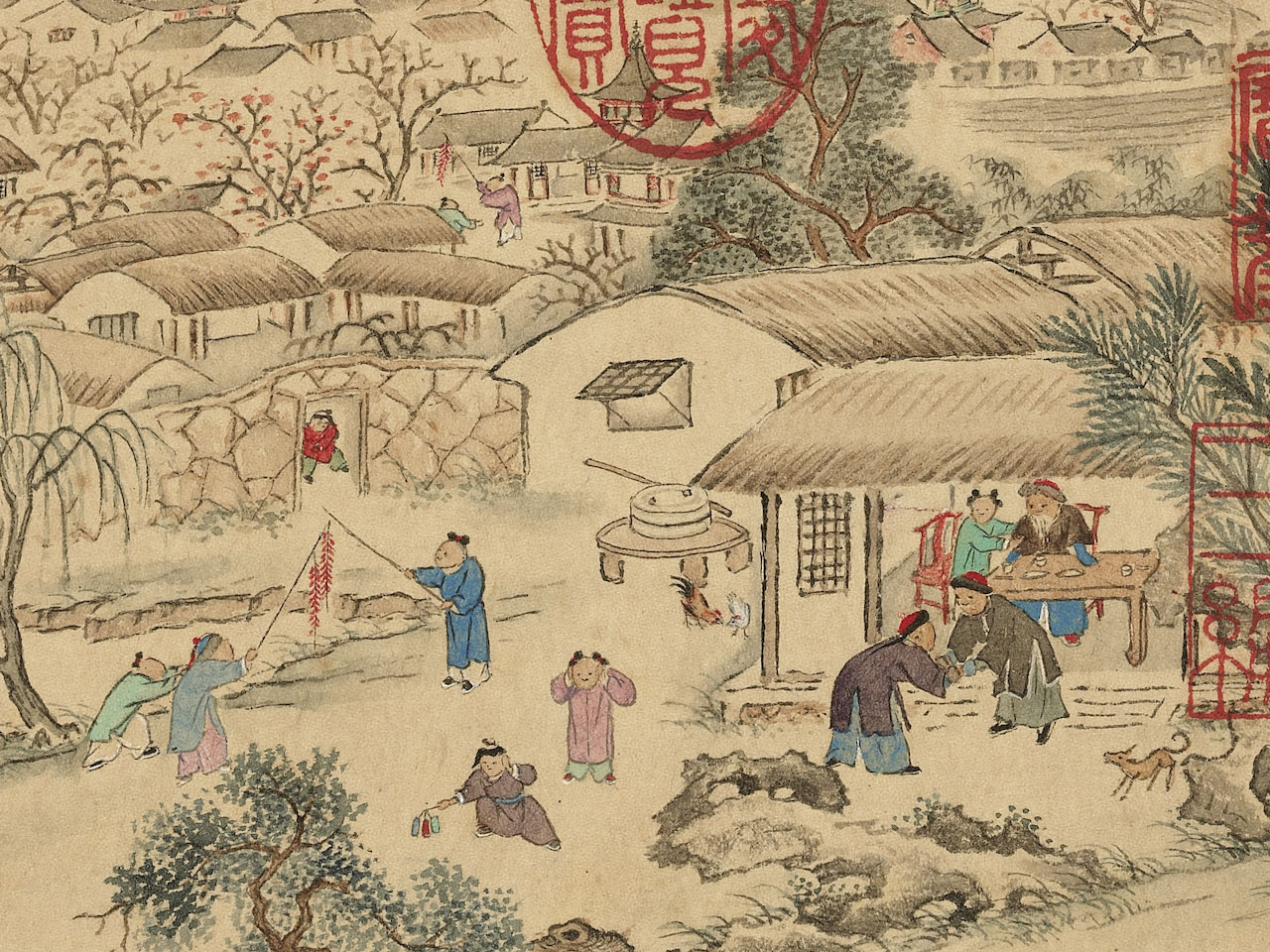The most important holiday in the local traditional calendar was (and still is) Chinese New Year. It begins by making offerings to the heavens on the winter solstice early in the twelfth lunar month and venerating the Buddha on the Laba Festival on the eighth day, followed by sending off and welcoming back the Kitchen God later in the month. Then on New Year's Eve, people perform rites to ward off disease, perform sacrifices to their ancestors, have a family reunion dinner, and stay up to see the old year off. On New Year's Day, they then light fireworks to welcome the new year and visit friends and relatives to wish for a prosperous year. Finally, on the Lantern Festival, people come out to appreciate the beautiful lamps, culminating the set of customs associated with the Chinese New Year. These activities not only show the gratitude of people for all in the world and reverence for the gods, they also are a precious heritage tracing back to the roots of Chinese culture. Painters with their various skills have likewise portrayed these customs and festivities from different perspectives over the ages.
Record of Annual Events and Activities: The Great Exorcism
- Wu Bin (fl. 1573-1620), Ming dynasty
- Album leaf, ink and colors on paper, 29.4 x 69.8 cm
Wu Bin, active in the reign of the Wanli emperor, was known for his paintings of figures and rendering forms in an eccentric manner of his own.
"The Great Exorcism" in the title here refers to a traditional ritual performed on Chinese New Year's Eve for expelling demons and pestilence. Performers would wear judge and local deity masks to drive malevolent spirits out of the city gate. It was also the custom to bang gongs and get rid of pestilence, as seen in the group on the bridge in this leaf. Two of the figures perform a ritual dance and wear unusual masks playing the role of "exorcists" as four others carry the sculpture of a god. One person bangs a drum and the other has cymbals as they lead the way, the artist capturing the noisy atmosphere of an exorcism performed at the time. The figures here appear similar to ceramic figurines, their physical appearance not very realistic, but close examination reveals much variation and detail to them.
Sounds of Spring among Myriad Households
- Liu Quanzhi (1739-1818), Qing dynasty
- Album leaf, ink and colors on paper, 12.8 x 16.8 cm
Liu Quanzhi served in the Hanlin Academy in 1760 during the Qianlong reign and reached the post of Grand Academician. He excelled at both painting and calligraphy.
This is the first leaf from the album "Calligraphing Omens for a Bountiful Spring" and depicts scenery associated with the New Year. The city wall winds into the distance with houses here and there, and clouds and mists are scattered about the distant mountains. By the riverbank, children play with firecrackers as friends and neighbors call out New Year's greetings to each other for a bustling and festive scene reminiscent of the following lines: "Myriad households raucous in the twelfth lunar month, auspiciousness rings across the paddies and streets." This painting is done with light and elegant colors, the lines succinct and the washes freely applied.



